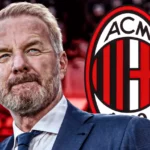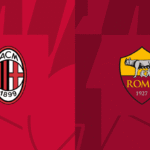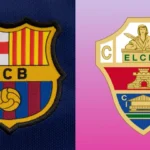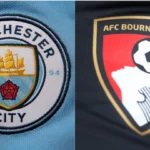Content
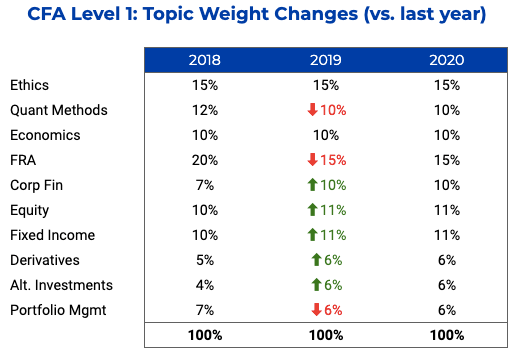
This decrease in value after the debt tipping point happens because of overleveraging. On the other hand, a company with zero leverage will have a WACC equal to its cost of equity financing and can reduce its WACC by adding debt up to the point where the marginal cost of debt equals the marginal cost of equity financing. In essence, the firm faces a trade-off between the value of increased leverage against the increasing costs of debt as borrowing costs rise to offset the increase value. Beyond this point, any additional debt will cause the market value and to increase the cost of capital. A blend of equity and debt financing can lead to a firm’s optimal capital structure.
Capital Com Online Investments Ltd is a limited liability company with company number B. Capital Com Online Investments Ltd is a Company registered in the Commonwealth of The Bahamas and authorised by the Securities Commission of The Bahamas with license number SIA-F245. The Company’s registered office is at Bahamas Financial Centre, 3rd Floor, traditional approach capital structure Shirley and Charlotte Street, P.O. Box N-4865, Nassau, Bahamas. In finance, the equity definition is the amount of money the owner of an asset would have… A)
They are well-informed about the risk-return
on all type of securities. Obviously, this net income of Rs. 433 is higher than that of the firm ‘B’ by disposing-off 1% holding.
Net Operating Income (NOI) is a measure of a firm’s operating profitability before deducting interest and taxes. It is calculated by subtracting a firm’s operating expenses from its operating revenues. The resulting figure represents the cash flow generated by the firm’s core operations and is used to evaluate the profitability of its ongoing operations. Where wd is the proportion of debt in total capital (debt ratio) and we is the proportion of equity (1 – debt ratio).
Debt will lower the WACC, but too much debt starts to raise the WACC due to increased risks. The ideal ratio of debt-to-equity will depend on the company and the industry, whether it be 30% debt and 70% equity, or vice versa. Ii) The cost of debt is less than cost of
equity or equity capitalisation rate. 2)
The total assets of the firm are given and the
degree of leverage can be altered by selling debt to repurchase shares or
selling shares to retire debt.
- (b) The cost of equity capital Ke, remains constant more or less or rises gradually up to a certain level and thereafter increases rapidly.
- For example, certain industries may be subject to regulatory restrictions on the amount of debt they can use.
- In finance, the equity definition is the amount of money the owner of an asset would have…
- Thus the arbitrage process drives the value of two
homogeneous companies to equality that differs only in leverage. - WACC is determined by the capital structure and is the required rate of return that equity and debt holders expect.
- Net Operating Income (NOI) is a measure of a firm’s operating profitability before deducting interest and taxes.
When interest rates are low, companies may prefer to use more debt financing, as the cost of borrowing is lower. When interest rates are high, companies may prefer to use more equity financing to avoid the high cost of debt. WACC involves finding the company’s cost of debt and equity and then finding their proportional weight to get the total cost of capital. Companies will use the WACC when making long-term decisions since it is indicative of the required rate of return for investors.
The growth of the Firm: Internal Development
In this context, MM support the NOI approach on the principle that the cost of capital is not dependent on the degree of leverage irrespective of the debt-equity mix. In the words, according to their thesis, the total market value of the firm and the cost of capital are independent of the capital structure. The traditional approach explains that up to a certain point, debt-equity mix will cause the market value of the firm to rise and the cost of capital to decline. But after attaining the optimum level, any additional debt will cause to decrease the market value and to increase the cost of capital. Thus, it is needless to say that the optimal capital structure is the minimum cost of capital if financial leverage is one; in other words, the maximum application of debt capital.

So, total value of the firm (V) and Average Cost of Capital, (Kw) are independent. (iii) The use of debt does not change the risk perception of the investors since the degree of leverage is increased to that extent. This gives an idea of how the value of a company and overall cost of capital may move with a change
in leverage according to the traditional approach.
Examples of Capital Structure Financing Theories
Thus the arbitrage process drives the value of two
homogeneous companies to equality that differs only in leverage. The MM hypothesis suggests that the total value of a firm is determined by its earning power and the risk of its underlying assets, and not by the way it is financed. According to this hypothesis, investors are indifferent between debt and equity financing, and any change in the capital structure of a firm will have no impact on its overall value. The optimal capital structure under the Net Operating Income approach can be determined by finding the level of debt that maximizes the firm’s net operating income. This is achieved by calculating the net operating income for different levels of debt and equity and selecting the capital structure with the highest net operating income.
Alternative theories of capital structure include (but are not limited to) pecking order theory, signalling theory, market timing theory, agency and free cash flow theory, among others. Thus, a firm can lower its cost of capital continuously due to the tax deductibility of interest charges. So, a firm must use the maximum amount of leverage in order to attain the optimum capital structure although the experience that we realise is contrary to the opinion. If corporate taxes are considered (which should be taken into consideration) the MM approach will be unable to discuss the relationship between the value of the firm and the financing decision. For example, we know that interest charges are deducted from profit available for dividend, i.e., it is tax deductible. The arbitrage process is retarded by the institutional investors e.g., Life Insurance Corporation of India, Commercial Banks; Unit Trust of India etc., i.e., they do not encourage personal leverage.
- It reveals that when the cheaper debt capital in the capital structure is proportionately increased, the weighted average cost of capital, Kw, decreases and consequently the cost of debt is Kd.
- From the above table it is quite clear that the value of the firm (V) will be increased if there is a proportionate increase in debt capital but there will be a reduction in overall cost of capital.
- According to one of these, the equity capitalization rate (k) rises only after a certain level of leverage and not before, so that the use of debt does not necessarily increase the k.
Under the Net Operating Income approach, the optimal capital structure is one that minimizes the firm’s weighted average cost of capital (WACC) at the point where the firm’s net operating income is maximized. The approach assumes that the cost of capital for a firm increases as it takes on more debt due to increased financial risk. However, it also recognizes that the cost of equity is not constant and increases as the firm’s risk increases.
Degree of Combined Leverage
Thus, as per the
traditional approach the cost of capital is a function of financial leverage
and the value of firm can be affected by the judicious mix of debt and equity
in capital structure. The increase of financial leverage upto a point
favourably affects the value of the firm. At this point, the capital structure
is optimal & the overall cost of capital will be the least. Describe the Traditional view of capital structure and its assumptions The Traditional theory of cost of capital, the weighted average cost of capital declines initially as gearing increases, but then rises as gearing increases further. The traditional view is as follows;-• As the level of gearing increases, the cost of debt remains unchanged up to a certain level of gearing. • The cost of equity rises as the level of gearing increases and financial risk increases.
Hence optimal capital structure under Net Income Approach would be 100% leverage financing. The substance of Net Operating Income Approach is that the capital structure decision of a firm is irrelevant. Thus, any fluctuation in leverage will not trigger any change in the total value of the firm and the market price of equity shares as well as the overall cost of capital is independent of the degree of leverage used.
The operating earnings of the firm are not expected to grow.
A company’s capital structure is a crucial factor in determining its overall financial health, profitability, and risk level. An optimal capital structure can help a company to maximize its returns while minimizing its costs, which can help it to achieve sustainable growth over the long term. Net income approach, operating income approach, traditional approach of capital structure. More debt is cheaper because of the ability to deduct interest and lower taxes. Thus, the maximum value under the net income approach is with 100% debt financing. The capital structure theory known as the net income approach says there is a direct relationship between the capital structure and the value of the business.
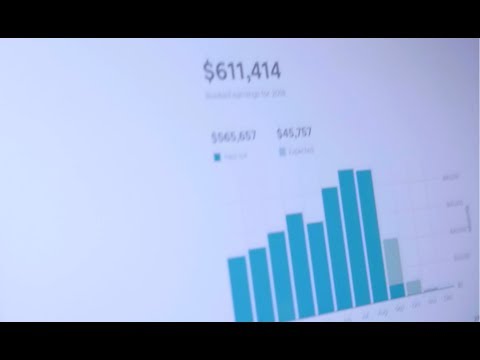
According to one of these, the equity capitalization rate (k) rises only after a certain level of leverage and not before, so that the use of debt does not necessarily increase the k. The implication is that a firm can reduce its cost of capital significantly with the initial use of leverage. This hypothesis was developed by Franco Modigliani and Merton Miller in the 1950s and 1960s and is one of the most influential theories in corporate finance. An optimal capital structure can help to increase a company’s return on equity by maximizing the amount of debt used in the capital structure. This is because debt is typically less expensive than equity, which can help to boost returns for shareholders. Capital structure refers to the way a company finances its operations and growth through a combination of equity, debt, and other securities.
Traditional Theory of Capital Structure – Explained
By understanding the theory, they can determine the optimal capital structure for a company and calculate its theoretical value. The trade-off model of capital structure is a financial theory that suggests that a company should balance the costs and benefits of various sources of financing, such as debt and equity. Iii)
The use of debt content does not change the risk perception of investors as a
result of both the Kd (Debt capitalisation rate) and Ke (equity capitalisation
rate) remains constant. What is the weighted average cost of capital (WACC) for ABC Limited which has the following capital structure? $5m of equity with a cost of equity of 15%; $2m of mezzanine finance with a cost of 9.5%; $1m of senior debt with a cost of debt of 7%. While buying securities, this cost is involved in the form of brokerage or commission etc. for which extra amount is to be paid which increases the cost price of the shares and requires a greater amount although the return is same.

The net income approach emphasizes the impact of financial leverage on a firm’s cost of equity and overall value. A company’s cost of capital is the total cost of financing its operations, including the cost of debt and equity. An optimal capital structure can help to reduce a company’s cost of capital by minimizing the overall cost of financing. That is, for a company in a particular risk class, the
total market value must be same irrespective of proportion of debt in company’s
capital structure.
Site Visits, Conducting a Site visit, Benefits of Site visits
(c) The average cost of capital, Kw, decreases up to a certain level remains unchanged more or less and thereafter rises after attaining a certain level. According to NI approach a firm may increase the total value of the firm by lowering its cost of capital. When the optimal capital structure is reached, the value of a firm is maximized as shown in the figure below. Equity financing involves raising capital by selling ownership stakes in the company to investors, such as through initial public offerings (IPOs), private equity, or venture capital. In real-world situation, however, firms do not take a larger amount of debt and creditors/lenders also are not interested to supply loan to highly levered firms due to the risk involved in it. Calculate the cost of capital and the value of the firm for each of the following alternative leverage after applying the NI approach.

